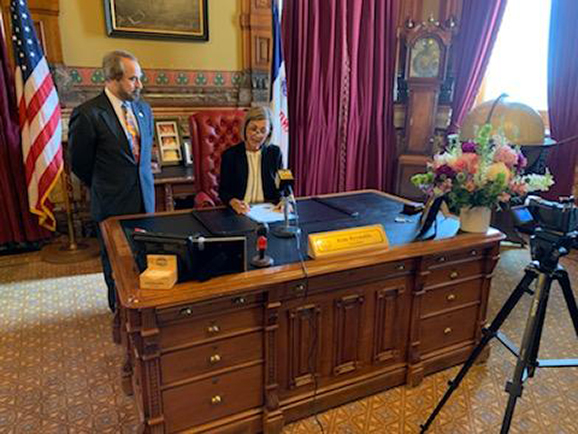Political and Cultural Polarization Addressed at TALKERS 2022. At the recent TALKERS 2022 convention held on June 10 at Hofstra University on Long Island, five talk radio hosts representing various political perspectives participated in the panel discussion “Maintaining Integrity in Times of Political and Cultural Polarization.” The panel was moderated by WPHT, Philadelphia talk show host Dom Giordano (below), who was introduced by WINS, New York morning drive anchor Lee Harris.

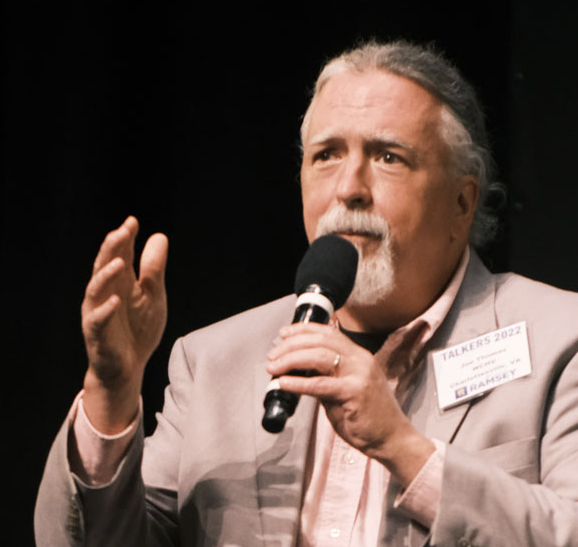
WCHV, Charlottesville talk show host and program director Joe Thomas takes part in the “Maintaining Integrity in Times of Political and Cultural Polarization” panel.

KOA, Denver talk show host Mandy Connell speaks during her appearance on the “Maintaining Integrity in Times of Political and Cultural Polarization” panel.
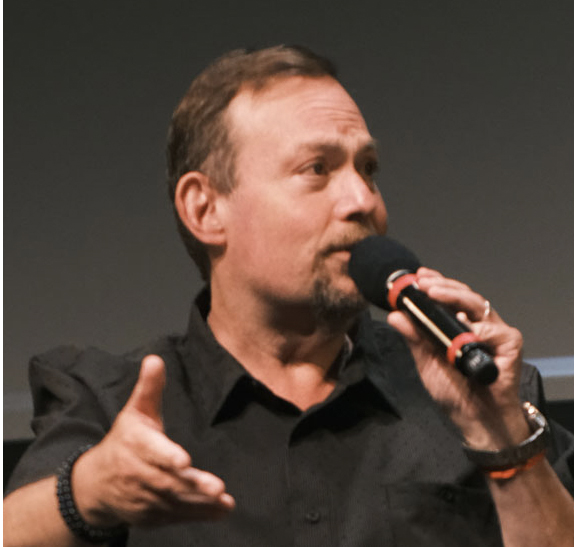
WRVA, Richmond afternoon drive talk host Jeff Katz makes a point during his appearance on the “Maintaining Integrity in Times of Political and Cultural Polarization” panel.

GCN nationally syndicated talk show host Dr. Daliah Wachs during her appearance on the “Maintaining Integrity in Times of Political and Cultural Polarization” panel.
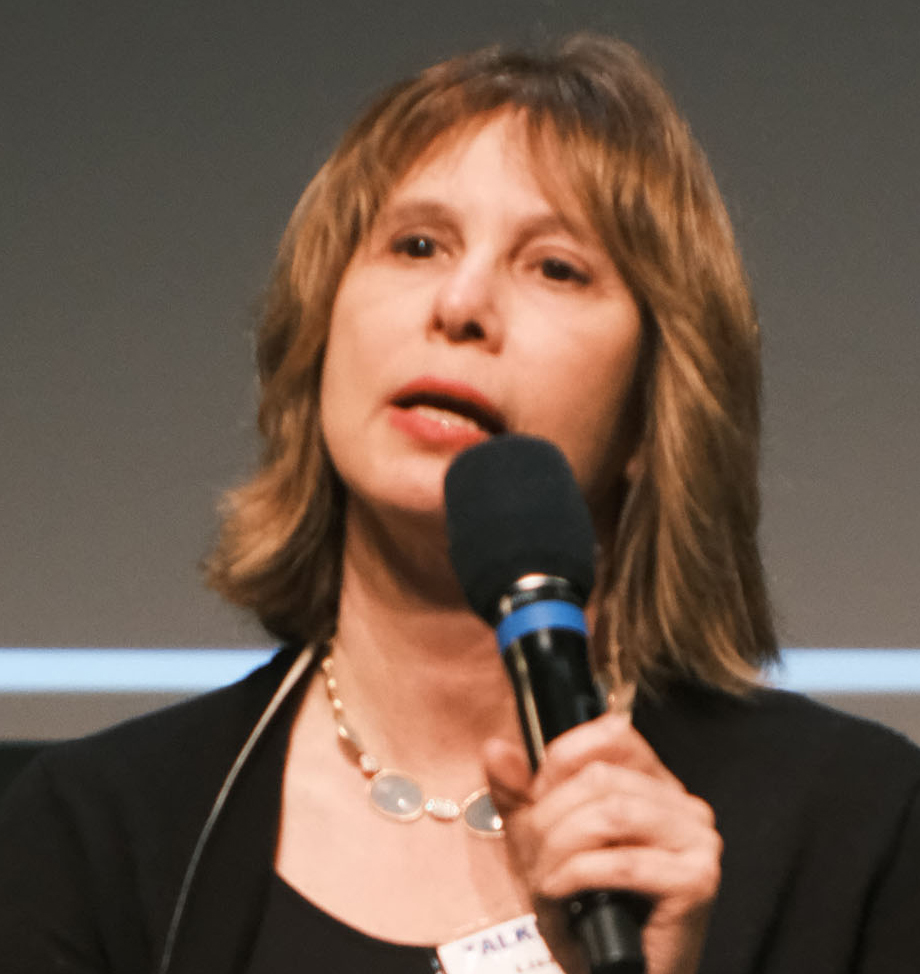
WICC, Bridgeport, Connecticut talk host and Connecticut probate judge Lisa Wexler speaks on the “Maintaining Integrity in Times of Political and Cultural Polarization” panel.
 Complete TALKERS 2022 Session Videos Being Posted TALKERS magazine is posting complete videos of each session from the TALKERS 2022 convention held on Friday, June 10 at Hofstra University. The video of the “Morning Greetings” session has been posted. This session includes: TALKERS 2022 emcee and TALKERS VP/executive editor Kevin Casey; the National Anthem performed on saxophone by WOAI, San Antonio and Compass Media Networks nationally syndicated talk host Joe “Pags” Pagliarulo; the “Welcome to Long Island” speech by JVC Broadcasting president/CEO John Caracciolo; the “Morning Wakeup” from FOX News Radio host Jimmy Failla; “A Gathering of Friends and Colleagues” presentation from Premiere Networks and FOX News Channel star Sean Hannity; and “Talk Radio in the Post-Rush Era” from Premiere Networks talk host Buck Sexton. See the video here.
Complete TALKERS 2022 Session Videos Being Posted TALKERS magazine is posting complete videos of each session from the TALKERS 2022 convention held on Friday, June 10 at Hofstra University. The video of the “Morning Greetings” session has been posted. This session includes: TALKERS 2022 emcee and TALKERS VP/executive editor Kevin Casey; the National Anthem performed on saxophone by WOAI, San Antonio and Compass Media Networks nationally syndicated talk host Joe “Pags” Pagliarulo; the “Welcome to Long Island” speech by JVC Broadcasting president/CEO John Caracciolo; the “Morning Wakeup” from FOX News Radio host Jimmy Failla; “A Gathering of Friends and Colleagues” presentation from Premiere Networks and FOX News Channel star Sean Hannity; and “Talk Radio in the Post-Rush Era” from Premiere Networks talk host Buck Sexton. See the video here.
KOA, Denver Programmer Greg Foster Among Staffers Let Go by iHeartMedia. The staff reductions taking place at iHeartMedia hit the Denver cluster recently with program director Greg Foster among those getting their pink slips. In addition to Foster, Tim Spence – program director for KHOW, Denver and KCOL, Fort Collins – was also let go, as was talk host Mike Rosen and producer for Mandy Connell’s program, Dave Lauer. Foster tells TALKERS magazine, “As for me, I’m certainly grateful for my 22-years with iHeart/Clear Channel. It was a good run!”
program director Greg Foster among those getting their pink slips. In addition to Foster, Tim Spence – program director for KHOW, Denver and KCOL, Fort Collins – was also let go, as was talk host Mike Rosen and producer for Mandy Connell’s program, Dave Lauer. Foster tells TALKERS magazine, “As for me, I’m certainly grateful for my 22-years with iHeart/Clear Channel. It was a good run!”
Westwood One Blog Reveals Results of Online Sports Betting Study. The CUMULUS MEDIA | Westwood One Audio Active Group commissioned MARU/Matchbox to conduct a national brand awareness study of online sports betting brands and it surveyed 1,252 adults 21-plus in February. The study consisted of 483 respondents were from states that have legalized sports betting and 769 respondents were from states that have not. Some of the ley findings include: 1) The ideal target for online sports betting are adults 35-54 who are married, have kids, and work full time. Nearly half of those most interested in online sports betting are adults 35-54 (48%). Women are becoming more interested in online sports betting. The gender profile of those interested is more evenly distributed (men 54% vs. women 46%); 2) Based on media habits of online sports betting intenders, the optimal media allocation is 54% AM/FM radio and 48% TV. Compared to TV viewers, AM/FM radio listeners have far more experience with online sports betting, greater interest, greater awareness of, and greater engagement with online sports betting brands; 3) The audio sports betting media plan should contain a wide array of AM/FM radio programming formats and podcast genres. Those interested in online sports betting listen to a broad array of podcast genres and AM/FM radio programming formats beyond just Sports programming. Audio media plans that focus mostly on spoken word (news/talk and sports) will miss the majority of those who are engaged with online sports betting. Based on AM/FM radio programming format preferences among those interested in online sports betting, the ideal allocation is 20% of impressions to rock and then 10% each to the rest of the formats (classic rock, news/talk, sports, classic hits/oldies, country, Top 40, urban, and adult contemporary); and 4) Audio media plans should emphasize reach over frequency and increase weight to reach 60% of the market. Recent monthly AM/FM radio plans are only reaching 38% of the market. Brands should seek to reach at least 60% of the market each month.
Women are becoming more interested in online sports betting. The gender profile of those interested is more evenly distributed (men 54% vs. women 46%); 2) Based on media habits of online sports betting intenders, the optimal media allocation is 54% AM/FM radio and 48% TV. Compared to TV viewers, AM/FM radio listeners have far more experience with online sports betting, greater interest, greater awareness of, and greater engagement with online sports betting brands; 3) The audio sports betting media plan should contain a wide array of AM/FM radio programming formats and podcast genres. Those interested in online sports betting listen to a broad array of podcast genres and AM/FM radio programming formats beyond just Sports programming. Audio media plans that focus mostly on spoken word (news/talk and sports) will miss the majority of those who are engaged with online sports betting. Based on AM/FM radio programming format preferences among those interested in online sports betting, the ideal allocation is 20% of impressions to rock and then 10% each to the rest of the formats (classic rock, news/talk, sports, classic hits/oldies, country, Top 40, urban, and adult contemporary); and 4) Audio media plans should emphasize reach over frequency and increase weight to reach 60% of the market. Recent monthly AM/FM radio plans are only reaching 38% of the market. Brands should seek to reach at least 60% of the market each month.
AdLarge Names Brian Egan Director of Digital Content and Strategy. Joining AdLarge as director of digital content and strategy is Brian Egan, who most recently was creator and co-founder of Inlet TV, a digital multi-media live streaming platform focused on highly scalable HTTP live streaming technology. In his new role with AdLarge, Egan will “spearhead the expansion of strategic discovery methods to uncover new talent and content creators in order to develop authentic and re-imagined advertising opportunities for clients.” AdLarge co-CEO Cathy Csukas says, “Throughout his career, Brian has had the
AdLarge, Egan will “spearhead the expansion of strategic discovery methods to uncover new talent and content creators in order to develop authentic and re-imagined advertising opportunities for clients.” AdLarge co-CEO Cathy Csukas says, “Throughout his career, Brian has had the 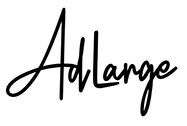 opportunity to work with some of the largest podcasters in the world and brings an impressive depth of experience and entrepreneurial vision to the company. With his leadership, we’re focused on finding new marketing and content opportunities and look forward to reaching new levels of success for our clients in 2022.” Egan comments, “I can’t express how excited I am to join this incredible team of industry-leading professionals. I’m looking forward to contributing to the inspired work they already do for their content partners, with an eye toward expanding their footprint in emerging markets and products. For anyone looking to connect on podcast content, technology, or to just make an introduction – my inbox is wide open!”
opportunity to work with some of the largest podcasters in the world and brings an impressive depth of experience and entrepreneurial vision to the company. With his leadership, we’re focused on finding new marketing and content opportunities and look forward to reaching new levels of success for our clients in 2022.” Egan comments, “I can’t express how excited I am to join this incredible team of industry-leading professionals. I’m looking forward to contributing to the inspired work they already do for their content partners, with an eye toward expanding their footprint in emerging markets and products. For anyone looking to connect on podcast content, technology, or to just make an introduction – my inbox is wide open!”
Townsquare Media Closes on Cherry Creek Acquisition. The deal for Townsquare Media to acquire 34 radio stations in nine markets from Cherry Creek has closed. Townsquare is paying $18.75 million for the stations in Butte, Great Falls, and Missoula, Montana; Montrose, Colorado; Sierra Vista, Arizona; St. George-Cedar City, Utah; Tri-Cities and Wenatchee, Washington; and Williston, North Dakota. Townsquare is divesting six radio stations in Missoula, Montana, to Anderson Broadcasting, Legacy Broadcasting (a non-profit organization), and Missoula Community Radio (also a non-profit organization), and is placing two radio stations in Tri-Cities, Washington in a divestiture trust. This transaction is being funded with cash on hand and Townsquare CFO Stuart Rosenstein states, “This acquisition represents a compelling use of capital that aligns with our priorities of investing in our local business through both organic investments and prudent acquisitions that support our revenue and profit growth. This acquisition is net leverage neutral and due to the strong cash generation of our business and the acquired assets, will not impact our ability to reach our goal of 4x net leverage by year end.” KALIL & CO., INC. was the exclusive broker for this transaction.
divesting six radio stations in Missoula, Montana, to Anderson Broadcasting, Legacy Broadcasting (a non-profit organization), and Missoula Community Radio (also a non-profit organization), and is placing two radio stations in Tri-Cities, Washington in a divestiture trust. This transaction is being funded with cash on hand and Townsquare CFO Stuart Rosenstein states, “This acquisition represents a compelling use of capital that aligns with our priorities of investing in our local business through both organic investments and prudent acquisitions that support our revenue and profit growth. This acquisition is net leverage neutral and due to the strong cash generation of our business and the acquired assets, will not impact our ability to reach our goal of 4x net leverage by year end.” KALIL & CO., INC. was the exclusive broker for this transaction.
ESPN Cleveland Hosts Inaugural Block Party. To celebrate the beginning of summer and to show off their new studios, Good Karma Brands’ WKNR-AM “ESPN Cleveland” will host the inaugural Block Party, presented by MGM Northfield Park, tomorrow (6/23) from 9:00 am to 7:00 pm. Fans can hear their favorite ESPN Cleveland hosts broadcast live, on stage, throughout the day. In addition to live show broadcasts, a second stage will host live music from a variety of local bands, vendors will sell local food and beverages, fans can participate in games with prizes, and even “dunk” their favorite ESPN Cleveland talent in the dunk tank. In addition, Cleveland’s pro sports teams are taking part in the event and all proceeds from it will benefit Muttley Crue Rescue – which rescues, cares for, and re-homes neglected, abused and/or homeless dogs. ESPN Cleveland host Tony Rizzo states, “The block party is going to be great opportunity for fans, partners, and teammates to get together after a long two years. I know the highlight of the day will be Aaron Goldhammer in the dunk tank!”
broadcast live, on stage, throughout the day. In addition to live show broadcasts, a second stage will host live music from a variety of local bands, vendors will sell local food and beverages, fans can participate in games with prizes, and even “dunk” their favorite ESPN Cleveland talent in the dunk tank. In addition, Cleveland’s pro sports teams are taking part in the event and all proceeds from it will benefit Muttley Crue Rescue – which rescues, cares for, and re-homes neglected, abused and/or homeless dogs. ESPN Cleveland host Tony Rizzo states, “The block party is going to be great opportunity for fans, partners, and teammates to get together after a long two years. I know the highlight of the day will be Aaron Goldhammer in the dunk tank!”
FABULOUS OFFER: Epoch Times Extraordinary Freebie to TALKERS 2022 Attendees Temporarily Extended to All TALKERS Subscribers. One of the most popular perks of the recent TALKERS 2022 conference held on Long Island (6/10) was a free lifetime digital subscription presented to all of the event’s attendees by The Epoch Times. The 20-plus year old international newspaper based here in the United States is a favorite of news/talk media hosts. The rapidly growing publication is known for its independent reporting and devotion to upholding the First Amendment and American democracy. Readers of TALKERS interested in receiving a lifetime digital subscription – no strings attached – can do so by clicking here.
New C. Crane Emergency Radio a Big Hit at TALKERS 2022. The first 200 registrants to arrive at the recent TALKERS 2022 convention on June 10 were surprised and delighted to find a real prize individually handed to them by iconic radio manufacturer/distributor C. Crane for their conference goodie bag. Each attendee received an amazing CCRadio Solar radio unit – valued at $99.99 retail – and the result was raves all around. The CCRadio Solar is a small digital portable radio that is successful as an emergency radio but the form and format function invite its owner to use it daily. Placed in a sunny window it’s perfect for the morning news. Audio is a surprise; it’s accurate, pleasing and has two modes. A miser mode to conserve battery power in a true emergency and a high-power mode for an even better audio experience. Reception is good for the size. The almost brick-size depth and unique UV resistant rubber perimeter is concave on the bottom which makes it inherently stable. The flashlight is above average in brightness and color because of the selected high-quality LED. The hand crank folded (that’s right, it can be cranked for power) and inlaid on in the back is the only visible clue that it’s an emergency radio. The included lithium-ion battery can be recharged by wind-up, solar panel, your USB port, or optional AC power adapter (not included). When the lithium-ion battery is fully charged, the radio will run more than 50 hours or charge your phone from the approximately 50% level to 100% level. It can also be powered by three “AA” alkaline batteries (not included) for approximately 50 hours in low power mode or 35 hours in high power mode. C. Crane founder Bob Crane tells TALKERS, “I brought the first CCRadio Solar home and my wife absconded with it until our designer/illustrator had to beg to get it back for documentation. To get it back from him was also overly arduous. I have never seen a radio so coveted. It is about hand size and it stays charged in a sunny window with an oversize solar panel which means it may not need a power assist for years.” To learn more about this fabulous device and enjoy a TALKERS discount on C.Crane purchases, please click here.
surprise; it’s accurate, pleasing and has two modes. A miser mode to conserve battery power in a true emergency and a high-power mode for an even better audio experience. Reception is good for the size. The almost brick-size depth and unique UV resistant rubber perimeter is concave on the bottom which makes it inherently stable. The flashlight is above average in brightness and color because of the selected high-quality LED. The hand crank folded (that’s right, it can be cranked for power) and inlaid on in the back is the only visible clue that it’s an emergency radio. The included lithium-ion battery can be recharged by wind-up, solar panel, your USB port, or optional AC power adapter (not included). When the lithium-ion battery is fully charged, the radio will run more than 50 hours or charge your phone from the approximately 50% level to 100% level. It can also be powered by three “AA” alkaline batteries (not included) for approximately 50 hours in low power mode or 35 hours in high power mode. C. Crane founder Bob Crane tells TALKERS, “I brought the first CCRadio Solar home and my wife absconded with it until our designer/illustrator had to beg to get it back for documentation. To get it back from him was also overly arduous. I have never seen a radio so coveted. It is about hand size and it stays charged in a sunny window with an oversize solar panel which means it may not need a power assist for years.” To learn more about this fabulous device and enjoy a TALKERS discount on C.Crane purchases, please click here.
Broadcasters Foundation of America Announces Radio Giving Day. The Broadcasters Foundation of America announces its first annual Radio Giving Day taking place on Wednesday, June 29 and calls it “a day to come together as one community with one common goal – to support radio professionals in need of financial assistance due to a critical illness, accident, or disaster.” In addition, the campaign aims to raise awareness of the charitable mission of the Broadcasters Foundation so that a radio professional in acute need can apply for aid. BFoA co-president Tim McCarthy says, “We need to make sure everyone working in radio stations across America is aware of what we do. It’s a tragedy to think that one of our colleagues in need might qualify for aid but doesn’t know about us. We’re asking everyone in radio to spread the word, especially if they know someone who we might be able to help.” The Broadcasters Foundation is encouraging radio groups and stations to implement employee donation drives in support of Radio Giving Day. Several media companies and radio station groups have already committed to helping the Radio Giving Day initiative, including Alpha Media Group, Audacy, Beasley Media Group, Connoisseur Media, Educational Media Foundation, Good Karma Brands, iHeartMedia, Independent Broadcasters Association, Premiere Networks, Salem Media Group, Skyview Satellite Network, Spanish Broadcasting System, and Townsquare Media.
radio professional in acute need can apply for aid. BFoA co-president Tim McCarthy says, “We need to make sure everyone working in radio stations across America is aware of what we do. It’s a tragedy to think that one of our colleagues in need might qualify for aid but doesn’t know about us. We’re asking everyone in radio to spread the word, especially if they know someone who we might be able to help.” The Broadcasters Foundation is encouraging radio groups and stations to implement employee donation drives in support of Radio Giving Day. Several media companies and radio station groups have already committed to helping the Radio Giving Day initiative, including Alpha Media Group, Audacy, Beasley Media Group, Connoisseur Media, Educational Media Foundation, Good Karma Brands, iHeartMedia, Independent Broadcasters Association, Premiere Networks, Salem Media Group, Skyview Satellite Network, Spanish Broadcasting System, and Townsquare Media.
TALKERS News Notes. A new program is launching on SportsMap Radio Network on Saturday, July 2, from 11:00 am to 12:00 noon ET. “The Game Before the Money” pairs football author, podcast host, and oral historian Jackson Michael with author and former NFL executive Upton Bell. Michael and Bell reveal stories that few fans have access to or even know exist. The weekly, hour-long program merges narratives from the NFL’s past with today’s headlines and compares yesteryear’s All-Americans with current college stars. GOW Media CEO David Gow states, “This is a highly entertaining and informative program. Jackson and Upton are both amazing storytellers. This is a wonderful addition to our network.”…..SiriusXM is recognizing the 50th anniversary of the passing of Title IX with special programming on
former NFL executive Upton Bell. Michael and Bell reveal stories that few fans have access to or even know exist. The weekly, hour-long program merges narratives from the NFL’s past with today’s headlines and compares yesteryear’s All-Americans with current college stars. GOW Media CEO David Gow states, “This is a highly entertaining and informative program. Jackson and Upton are both amazing storytellers. This is a wonderful addition to our network.”…..SiriusXM is recognizing the 50th anniversary of the passing of Title IX with special programming on  SiriusXM’s Mad Dog Sports Radio channel and on the SXM App that highlights the impact the law had on the future of women’s sports. On June 23, 1972, the federal civil rights law (Title IX) was passed as part of the Education Amendments of 1972, prohibiting discrimination based on sex in any school or education program that receives funding from the federal government. The introduction of Title IX led to a considerable increase in the number of females participating in organized sports within American academic institutions and is considered to have been a significant step forward in the advancement of equality and equity for women and girls in sport. Tonight at 6:00 ET, SiriusXM’s Linda Cohn hosts “Title IX at 50,” which will examine the impact of Title IX on the world of sports, highlight significant moments that followed the passage of the law, and tell the stories of several groundbreaking women who have excelled in various sports.
SiriusXM’s Mad Dog Sports Radio channel and on the SXM App that highlights the impact the law had on the future of women’s sports. On June 23, 1972, the federal civil rights law (Title IX) was passed as part of the Education Amendments of 1972, prohibiting discrimination based on sex in any school or education program that receives funding from the federal government. The introduction of Title IX led to a considerable increase in the number of females participating in organized sports within American academic institutions and is considered to have been a significant step forward in the advancement of equality and equity for women and girls in sport. Tonight at 6:00 ET, SiriusXM’s Linda Cohn hosts “Title IX at 50,” which will examine the impact of Title IX on the world of sports, highlight significant moments that followed the passage of the law, and tell the stories of several groundbreaking women who have excelled in various sports.
The Economy, Primary Elections, Gun Legislation, SCOTUS Religious Education Ruling, January 6 Hearings, Russia-Ukraine War, Heatwave/Western Drought Among Top News/Talk Stories Yesterday (6/21). The high price of gas & food, President Joe Biden’s considering federal gas tax relief, the sinking financial markets, and concerns about a recession; Tuesday’s primary elections for November’s midterms and Donald Trump’s influence over the GOP; Senate negotiators reach a deal on bi-partisan gun legislation; the Supreme Court rules against Maine’s ban on taxpayer funding for religious schools; the continuing January 6 Committee’s hearings; Russia’s ongoing invasion of Ukraine and its impact on the global economy; and the intense heatwaves taking place in the U.S. and abroad and the drought affecting the Western U.S. were some of the most-talked-about stories on news/talk radio yesterday, according to ongoing research from TALKERS magazine.
Share this with your network
 media budget, adding AM/FM radio to a digital/TV plan sharply builds reach. Via Nielsen Commspoint, the media allocation planning tool, a wide range of monthly digital/TV media plans were examined. Very small, light, medium, and heavy campaigns were examined. The lightest digital/TV campaign reached 10% of the market. The heaviest reached 60%. Then a 20% allocation of AM/FM radio was introduced. The results were stunning. Across the seven monthly campaigns, from the lightest to the heaviest, the addition of AM/FM radio generated significant lifts in reach. Shifting 20% of the lightest TV/digital campaign to AM/FM radio caused reach to double. Introducing the 20% allocation of AM/FM radio to medium-sized campaigns causes reach to soar by 36% to 55%. Even the heaviest TV and digital campaign saw reach grow 20% with the addition of AM/FM radio to the plan.” Read the full blog post here.
media budget, adding AM/FM radio to a digital/TV plan sharply builds reach. Via Nielsen Commspoint, the media allocation planning tool, a wide range of monthly digital/TV media plans were examined. Very small, light, medium, and heavy campaigns were examined. The lightest digital/TV campaign reached 10% of the market. The heaviest reached 60%. Then a 20% allocation of AM/FM radio was introduced. The results were stunning. Across the seven monthly campaigns, from the lightest to the heaviest, the addition of AM/FM radio generated significant lifts in reach. Shifting 20% of the lightest TV/digital campaign to AM/FM radio caused reach to double. Introducing the 20% allocation of AM/FM radio to medium-sized campaigns causes reach to soar by 36% to 55%. Even the heaviest TV and digital campaign saw reach grow 20% with the addition of AM/FM radio to the plan.” Read the full blog post here. 


 content, providing an accurate assessment of the audience’s attentiveness and engagement.” Some of the key findings include: 1) Despite lacking “sight, sound, and motion,” AM/FM radio programming was +13% more engaging than Mediaprobe’s norm for television in the U.S. For advertisers, this means the AM/FM radio context for their ads has greater engagement than the TV context; 2) Overall, AM/FM radio advertising’s Emotional Impact Score (EIS) outperformed TV advertising by +12%. These new findings validate the recently released Dentsu/Lumen study, which revealed audio ads outperform video for attention and brand recall; 3) AM/FM radio news was the most impactful genre, consistently measuring as a high-quality contextual environment for advertising (+14% greater than Mediaprobe TV News norms and +8% than total AM/FM radio); 4) Mediaprobe audio benchmarks reveal the sound contrast between AM/FM radio programming and the ads drives higher attention and brand recall. For example, ads with music and jingles perform very well in spoken word programming due to the contrast; and 5) Creative best practices: Use female voiceovers, jingles, and include five brand mentions.
content, providing an accurate assessment of the audience’s attentiveness and engagement.” Some of the key findings include: 1) Despite lacking “sight, sound, and motion,” AM/FM radio programming was +13% more engaging than Mediaprobe’s norm for television in the U.S. For advertisers, this means the AM/FM radio context for their ads has greater engagement than the TV context; 2) Overall, AM/FM radio advertising’s Emotional Impact Score (EIS) outperformed TV advertising by +12%. These new findings validate the recently released Dentsu/Lumen study, which revealed audio ads outperform video for attention and brand recall; 3) AM/FM radio news was the most impactful genre, consistently measuring as a high-quality contextual environment for advertising (+14% greater than Mediaprobe TV News norms and +8% than total AM/FM radio); 4) Mediaprobe audio benchmarks reveal the sound contrast between AM/FM radio programming and the ads drives higher attention and brand recall. For example, ads with music and jingles perform very well in spoken word programming due to the contrast; and 5) Creative best practices: Use female voiceovers, jingles, and include five brand mentions. 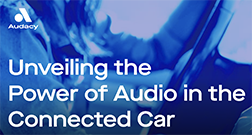 audio experienced a 17% decline. The study identified radio app and voice users as super users who shared common traits and expectations. Audacy notes, “These highly engaged individuals demand seamless transitions for Audio across their home, phone, and car systems… Moreover, they exhibit readiness to spend, particularly in high-budget categories like home improvement and financial services, responding actively to targeted radio ads. For advertisers, crafting personalized ads targeted at these audiences presents an exceptional opportunity to guide listeners through all stages of the purchase funnel.” Other key findings of the study include: 1) Nearly half of radio app users sought information about advertised products online after hearing an ad in the car, compared to 22% of all listeners; 2) 31% of radio app users and 27% of voice users visited the store they heard about, doubling the rate of all listeners; and 3) 27% of radio app users purchased advertised products, more than doubling the rate of all listeners.
audio experienced a 17% decline. The study identified radio app and voice users as super users who shared common traits and expectations. Audacy notes, “These highly engaged individuals demand seamless transitions for Audio across their home, phone, and car systems… Moreover, they exhibit readiness to spend, particularly in high-budget categories like home improvement and financial services, responding actively to targeted radio ads. For advertisers, crafting personalized ads targeted at these audiences presents an exceptional opportunity to guide listeners through all stages of the purchase funnel.” Other key findings of the study include: 1) Nearly half of radio app users sought information about advertised products online after hearing an ad in the car, compared to 22% of all listeners; 2) 31% of radio app users and 27% of voice users visited the store they heard about, doubling the rate of all listeners; and 3) 27% of radio app users purchased advertised products, more than doubling the rate of all listeners.  aggressive AM/FM streaming app acquisition strategy by negotiating with three targets simultaneously. It is now clear that market conditions are unfavorable for securing the largest acquisition as our first target. As such, to optimize shareholder value we are withdrawing the current S-1 on file that contemplates the Radio FM acquisition.”
aggressive AM/FM streaming app acquisition strategy by negotiating with three targets simultaneously. It is now clear that market conditions are unfavorable for securing the largest acquisition as our first target. As such, to optimize shareholder value we are withdrawing the current S-1 on file that contemplates the Radio FM acquisition.” those living in suburban or urban areas. Rural listeners spend 43% of their daily audio listening time with AM/FM radio and radio streams, compared with urban listeners who spend 34% of their time with AM/FM radio and radio streams. Meanwhile, Urban listeners spend over twice as much of their daily audio time with podcasts as rural listeners. Urban listeners spend 13% of their daily audio time with podcasts compared with rural listeners who spend 6% of their daily time with podcasts.” Interestingly, if you combine the AM/FM listening and podcast listening numbers for Urban, Suburban and Rural listeners, these numbers are essentially the same – between 47% and 49%. Edison notes, “It appears that the ‘time budget’ for radio and podcasting combined is consistent across locations; it is just the apportionment of that time that varies.”
those living in suburban or urban areas. Rural listeners spend 43% of their daily audio listening time with AM/FM radio and radio streams, compared with urban listeners who spend 34% of their time with AM/FM radio and radio streams. Meanwhile, Urban listeners spend over twice as much of their daily audio time with podcasts as rural listeners. Urban listeners spend 13% of their daily audio time with podcasts compared with rural listeners who spend 6% of their daily time with podcasts.” Interestingly, if you combine the AM/FM listening and podcast listening numbers for Urban, Suburban and Rural listeners, these numbers are essentially the same – between 47% and 49%. Edison notes, “It appears that the ‘time budget’ for radio and podcasting combined is consistent across locations; it is just the apportionment of that time that varies.” small attributed lift (0% to +3% lift) to excellent (+15% or more). Across the 17 campaigns analyzed, the average attributed lift was +14%. Three tax preparation service campaigns achieved “excellent” status ranging from a +30% to +48% attributed lift; 2) On average, the 17 AM/FM radio campaigns saw the highest percentage of impressions at the start of the week, peaking on Mondays and Tuesdays. Compared to the Nielsen impressions, the AM/FM radio campaigns outperformed on Saturday, Sunday, and Monday. Advertisers should increase their use of AM/FM radio on the weekends. AM/FM radio campaigns on weekends drive impact and results; and 3) On average, evenings have a greater share of attributed web sessions due to available devices and free time of consumers. Mornings historically underdeliver their share of impressions since consumers are busy getting ready for work and school. This expected pattern should not be a reason to move campaign weight out of morning drive. Morning drive exposure results in web sessions during later dayparts when consumers have the time and available devices to respond.
small attributed lift (0% to +3% lift) to excellent (+15% or more). Across the 17 campaigns analyzed, the average attributed lift was +14%. Three tax preparation service campaigns achieved “excellent” status ranging from a +30% to +48% attributed lift; 2) On average, the 17 AM/FM radio campaigns saw the highest percentage of impressions at the start of the week, peaking on Mondays and Tuesdays. Compared to the Nielsen impressions, the AM/FM radio campaigns outperformed on Saturday, Sunday, and Monday. Advertisers should increase their use of AM/FM radio on the weekends. AM/FM radio campaigns on weekends drive impact and results; and 3) On average, evenings have a greater share of attributed web sessions due to available devices and free time of consumers. Mornings historically underdeliver their share of impressions since consumers are busy getting ready for work and school. This expected pattern should not be a reason to move campaign weight out of morning drive. Morning drive exposure results in web sessions during later dayparts when consumers have the time and available devices to respond.  from the study include: 1) the proportion of AM/FM radio in-car listening rose 9% year-over-year and is on par with pre-pandemic levels of listening; 2) spoken-word content listening is at an eight-year high with 39% of ad-supported listening (including AM/FM, streaming and podcasts) devoted to news/talk, talk, and sports; and 3) looking at Persons 25-54, the share of ad-supported audio time spent with personalities/talk shows has increased the most – from 11% of ad-supported listening in Q4 2016 to 19.4% in Q3 of 2023.
from the study include: 1) the proportion of AM/FM radio in-car listening rose 9% year-over-year and is on par with pre-pandemic levels of listening; 2) spoken-word content listening is at an eight-year high with 39% of ad-supported listening (including AM/FM, streaming and podcasts) devoted to news/talk, talk, and sports; and 3) looking at Persons 25-54, the share of ad-supported audio time spent with personalities/talk shows has increased the most – from 11% of ad-supported listening in Q4 2016 to 19.4% in Q3 of 2023.  AM/FM radio listeners are 39% more likely to pay $301+ to have their taxes prepared and show greater familiarity, interest, consideration, and usage of tax category brands; 2) AM/FM radio ads drive site traffic for tax preparation brands: In the LeadsRx attribution study of a tax preparation service’s multi-wave campaign, AM/FM radio generated between a 43% to 47% increase in website traffic; 3) Branding early and often in tax preparation service ads drives more site traffic: LeadsRx found the top three creative executions that drove site traffic for a tax preparation service had the marketer’s brand name within the first five seconds of the ad; and 4) compared to other radio formats, a 2023 tax prep campaign on news/talk and sports stations realized a higher percentage share of interactions than the percentage share of their Nielsen ad impressions.
AM/FM radio listeners are 39% more likely to pay $301+ to have their taxes prepared and show greater familiarity, interest, consideration, and usage of tax category brands; 2) AM/FM radio ads drive site traffic for tax preparation brands: In the LeadsRx attribution study of a tax preparation service’s multi-wave campaign, AM/FM radio generated between a 43% to 47% increase in website traffic; 3) Branding early and often in tax preparation service ads drives more site traffic: LeadsRx found the top three creative executions that drove site traffic for a tax preparation service had the marketer’s brand name within the first five seconds of the ad; and 4) compared to other radio formats, a 2023 tax prep campaign on news/talk and sports stations realized a higher percentage share of interactions than the percentage share of their Nielsen ad impressions. 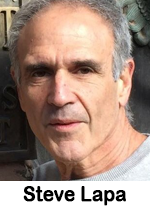 Survey says nearly half of all Americans over 13, nearly 135 million, listen to spoken word formats. The growth curve boasts an eye opening 52% jump in time spent listening at home.
Survey says nearly half of all Americans over 13, nearly 135 million, listen to spoken word formats. The growth curve boasts an eye opening 52% jump in time spent listening at home. word, which is a 55% increase over nine years ago (20%); 2) Spoken word listening at home has grown dramatically: 60% of the total daily audio time spent with spoken word audio is at home, 24% in the car, 13% at work, and 3% at some other location. The time spent listening to spoken word audio at home has grown to 41 daily minutes in 2023 from 27 daily minutes in 2014. Increases in at-home spoken word audio listening are seen across every hour in the listening day; 3) Spoken word listening in-car has shifted post-pandemic, but AM/FM radio remains on top: Of all the daily time spent listening to spoken word audio, time spent listening in the car has declined from 36% in 2014 to 24% in 2023. In the car, 62% of spoken word audio consumed by those in the U.S. age 13+ is to AM/FM radio content, including over the air and streams; 4) For the first time ever, the mobile device is the primary way people listen to spoken word: 39% of spoken word audio consumed daily by those age 13+ in the U.S. is on a mobile device, followed by 35% on an AM/FM radio receiver. At home, 41% of spoken word audio is consumed on a mobile device, and at work, 47% of spoken word is consumed on a mobile device. AM/FM radio receivers still dominate in-car, garnering 60% of the spoken word audio listening there; and 5) Podcasts represent a large and growing share of spoken word listening: Podcasts now represent over one-third (36%) of time spent with spoken word audio. Twenty-eight percent of time spent listening to podcasts goes to NPR/public radio. At home, 40% of spoken-word audio listening goes to podcasts.
word, which is a 55% increase over nine years ago (20%); 2) Spoken word listening at home has grown dramatically: 60% of the total daily audio time spent with spoken word audio is at home, 24% in the car, 13% at work, and 3% at some other location. The time spent listening to spoken word audio at home has grown to 41 daily minutes in 2023 from 27 daily minutes in 2014. Increases in at-home spoken word audio listening are seen across every hour in the listening day; 3) Spoken word listening in-car has shifted post-pandemic, but AM/FM radio remains on top: Of all the daily time spent listening to spoken word audio, time spent listening in the car has declined from 36% in 2014 to 24% in 2023. In the car, 62% of spoken word audio consumed by those in the U.S. age 13+ is to AM/FM radio content, including over the air and streams; 4) For the first time ever, the mobile device is the primary way people listen to spoken word: 39% of spoken word audio consumed daily by those age 13+ in the U.S. is on a mobile device, followed by 35% on an AM/FM radio receiver. At home, 41% of spoken word audio is consumed on a mobile device, and at work, 47% of spoken word is consumed on a mobile device. AM/FM radio receivers still dominate in-car, garnering 60% of the spoken word audio listening there; and 5) Podcasts represent a large and growing share of spoken word listening: Podcasts now represent over one-third (36%) of time spent with spoken word audio. Twenty-eight percent of time spent listening to podcasts goes to NPR/public radio. At home, 40% of spoken-word audio listening goes to podcasts.  Folks in the Gen Z and millennial demographics are heavily
Folks in the Gen Z and millennial demographics are heavily  monthly, and 77% have ever listened to podcasts. “All of this podcast and AM/FM radio audience duplication means there are great cross-promotion opportunities.” Among the podcast audience, over half the ad-supported time spent goes to podcasts themselves at a 53% share. AM/FM radio follows with a 37% share. Distantly following are ad-supported SiriusXM (4%), ad-supported Spotify (3%), and ad-supported Pandora (3%). Additionally, MARU/Matchbox was commissioned to study Cumulus Media radio listeners who listened for at least an hour to stations in Dallas, Chicago, Detroit, San Francisco and Atlanta and were exposed to promos for eight Cumulus Podcast Network podcast titles. Overall, 54% of the Cumulus radio audience were aware of the eight Cumulus Podcast Network podcasts. A much larger promotion of heavy AM/FM radio listeners (67%) were aware of the podcast titles, and a whopping 75% of the heavy AM/FM radio streaming audience were aware of the podcast titles.
monthly, and 77% have ever listened to podcasts. “All of this podcast and AM/FM radio audience duplication means there are great cross-promotion opportunities.” Among the podcast audience, over half the ad-supported time spent goes to podcasts themselves at a 53% share. AM/FM radio follows with a 37% share. Distantly following are ad-supported SiriusXM (4%), ad-supported Spotify (3%), and ad-supported Pandora (3%). Additionally, MARU/Matchbox was commissioned to study Cumulus Media radio listeners who listened for at least an hour to stations in Dallas, Chicago, Detroit, San Francisco and Atlanta and were exposed to promos for eight Cumulus Podcast Network podcast titles. Overall, 54% of the Cumulus radio audience were aware of the eight Cumulus Podcast Network podcasts. A much larger promotion of heavy AM/FM radio listeners (67%) were aware of the podcast titles, and a whopping 75% of the heavy AM/FM radio streaming audience were aware of the podcast titles. 
 underestimate time spent with AM/FM radio. While they believe Americans spend 9% of their media time with AM/FM radio, the reality is 15%.” Why is this? The report cites two reasons. First, longtime ad agency executive Bob Hoffman says, “How can professional people who work in an industry that is largely constructed on media behavior be so astoundingly misinformed? The answer is pretty simple… marketers always overestimate the attraction of new things and underestimate the power of traditional consumer behavior.” Second, marketing professor Mark Ritson adds, “There is increasing global evidence that marketers are basing their media choices on their own behavior or that stoked by the digitally obsessed marketing media, rather than actual audience data.”
underestimate time spent with AM/FM radio. While they believe Americans spend 9% of their media time with AM/FM radio, the reality is 15%.” Why is this? The report cites two reasons. First, longtime ad agency executive Bob Hoffman says, “How can professional people who work in an industry that is largely constructed on media behavior be so astoundingly misinformed? The answer is pretty simple… marketers always overestimate the attraction of new things and underestimate the power of traditional consumer behavior.” Second, marketing professor Mark Ritson adds, “There is increasing global evidence that marketers are basing their media choices on their own behavior or that stoked by the digitally obsessed marketing media, rather than actual audience data.”  One out of three American AM/FM radio listeners are reached monthly by AM radio. From the Edison study: 1) AM/FM radio dominates listening in the car with an 88% share of ad-supported audio; 2) AM/FM radio’s near-90 share of in-car ad-supported audio has been steady as a rock for the last six years; 3) AM/FM radio’s ad-supported shares in the car are dominant across all demographics, even among 18-34s; and 4) ‘Perception’ vs. ‘reality’: Agencies and advertisers underestimate AM/FM radio shares and overestimate Pandora and Spotify audiences (‘Perception’ from Advertiser Perceptions data). MRI Simmons shows Ford owners represent 20% of all U.S. AM radio listeners and are more likely to listen to AM radio. Cumulus chief insights officer Pierre Bouvard comments, “AM stations serve very unique, targeted constituencies and represent many languages and voices. As automobile manufacturers consider eliminating AM radio, it’s important to underscore that the AM dial is one of the most diverse media platforms in the world. Why would we eliminate this variety from the car?”
One out of three American AM/FM radio listeners are reached monthly by AM radio. From the Edison study: 1) AM/FM radio dominates listening in the car with an 88% share of ad-supported audio; 2) AM/FM radio’s near-90 share of in-car ad-supported audio has been steady as a rock for the last six years; 3) AM/FM radio’s ad-supported shares in the car are dominant across all demographics, even among 18-34s; and 4) ‘Perception’ vs. ‘reality’: Agencies and advertisers underestimate AM/FM radio shares and overestimate Pandora and Spotify audiences (‘Perception’ from Advertiser Perceptions data). MRI Simmons shows Ford owners represent 20% of all U.S. AM radio listeners and are more likely to listen to AM radio. Cumulus chief insights officer Pierre Bouvard comments, “AM stations serve very unique, targeted constituencies and represent many languages and voices. As automobile manufacturers consider eliminating AM radio, it’s important to underscore that the AM dial is one of the most diverse media platforms in the world. Why would we eliminate this variety from the car?”  “while AM/FM radio represented only 16% of the media budgets, AM/FM radio generated 25% of site and search traffic.” Further, it discovered that “AM/FM radio delivered +58% greater site traffic than its share of spend. In contrast, TV delivered -11% less conversion lift than its share of the budget.” A Nielsen sales effect study of a campaign for a major retailer matched Portable People Meter panel data with credit card data to reveal how TV and AM/FM radio impacted sales. The AM/FM radio-only segment, those consumers only reached by the AM/FM radio campaign, had 3 times the sales lift of the consumers reached by the TV ads. Consumers only exposed to the TV ads generated a +4.6% sales increase. Those who saw both the TV ads and the AM/FM radio ads had a +4.8% sales lift. The segment only exposed to the AM/FM radio ads had an outsized +13.4% increase in sales.
“while AM/FM radio represented only 16% of the media budgets, AM/FM radio generated 25% of site and search traffic.” Further, it discovered that “AM/FM radio delivered +58% greater site traffic than its share of spend. In contrast, TV delivered -11% less conversion lift than its share of the budget.” A Nielsen sales effect study of a campaign for a major retailer matched Portable People Meter panel data with credit card data to reveal how TV and AM/FM radio impacted sales. The AM/FM radio-only segment, those consumers only reached by the AM/FM radio campaign, had 3 times the sales lift of the consumers reached by the TV ads. Consumers only exposed to the TV ads generated a +4.6% sales increase. Those who saw both the TV ads and the AM/FM radio ads had a +4.8% sales lift. The segment only exposed to the AM/FM radio ads had an outsized +13.4% increase in sales.  increases in advertising awareness, brand relevance, brand trust, and brand consideration.” Other key findings include: 1) AM/FM radio increases the efficiency of automotive media plans: Colourtext and Radiocentre compared AM/FM radio’s average share of total media spend to the increase in advertising awareness, brand relevance, and brand trust generated by AM/FM radio campaigns. In each case, the auto brand lift is four to 11 times greater than AM/FM radio’s share of media spend; 2) the best performing auto campaigns place an emphasis on creative consistency; 3) AM/FM radio creates future demand for automotive brands; 4) Nielsen Scarborough: American auto intenders clock a lot of miles in their vehicles: A Nielsen Scarborough study of 199,118 Americans finds new car buying intentions in the next year increase as miles traveled grows; 5) among ad-supported audio, AM/FM radio has a dominating 89% share of in-car time spent; 6) Nielsen Scarborough: Heavy AM/FM radio and digital consumers are way above the norm for auto purchase intention; and 7) new vehicle purchasers are similar in profile to heavy AM/FM radio listeners, and heavy Internet users, and podcast listeners.
increases in advertising awareness, brand relevance, brand trust, and brand consideration.” Other key findings include: 1) AM/FM radio increases the efficiency of automotive media plans: Colourtext and Radiocentre compared AM/FM radio’s average share of total media spend to the increase in advertising awareness, brand relevance, and brand trust generated by AM/FM radio campaigns. In each case, the auto brand lift is four to 11 times greater than AM/FM radio’s share of media spend; 2) the best performing auto campaigns place an emphasis on creative consistency; 3) AM/FM radio creates future demand for automotive brands; 4) Nielsen Scarborough: American auto intenders clock a lot of miles in their vehicles: A Nielsen Scarborough study of 199,118 Americans finds new car buying intentions in the next year increase as miles traveled grows; 5) among ad-supported audio, AM/FM radio has a dominating 89% share of in-car time spent; 6) Nielsen Scarborough: Heavy AM/FM radio and digital consumers are way above the norm for auto purchase intention; and 7) new vehicle purchasers are similar in profile to heavy AM/FM radio listeners, and heavy Internet users, and podcast listeners. 

 NFL, and this year’s Super Bowl coverage marks the 50th time that the network will broadcast the game. Some of the key takeaways from this study are: 1) NFL postseason AM/FM radio listeners are a desirable group of consumers: They are more likely to work full time and have higher disposable incomes compared to NFL postseason TV viewers; 2) The NFL postseason AM/FM radio audience is more engaged with sports: MRI Simmons finds NFL postseason AM/FM radio listeners attend more sporting events, seek out sports information on their phones more often, and play more fantasy sports than NFL postseason TV watchers. The higher levels of engagement translate into greater advertising effectiveness; and 3) NFL postseason AM/FM radio listeners are more likely to make purchases across key consumer categories: Compared to the NFL postseason TV audience, AM/FM radio delivers more consumers who are likely to buy a new or used vehicle, start a new business, or hire a financial advisor. You can see the complete report
NFL, and this year’s Super Bowl coverage marks the 50th time that the network will broadcast the game. Some of the key takeaways from this study are: 1) NFL postseason AM/FM radio listeners are a desirable group of consumers: They are more likely to work full time and have higher disposable incomes compared to NFL postseason TV viewers; 2) The NFL postseason AM/FM radio audience is more engaged with sports: MRI Simmons finds NFL postseason AM/FM radio listeners attend more sporting events, seek out sports information on their phones more often, and play more fantasy sports than NFL postseason TV watchers. The higher levels of engagement translate into greater advertising effectiveness; and 3) NFL postseason AM/FM radio listeners are more likely to make purchases across key consumer categories: Compared to the NFL postseason TV audience, AM/FM radio delivers more consumers who are likely to buy a new or used vehicle, start a new business, or hire a financial advisor. You can see the complete report 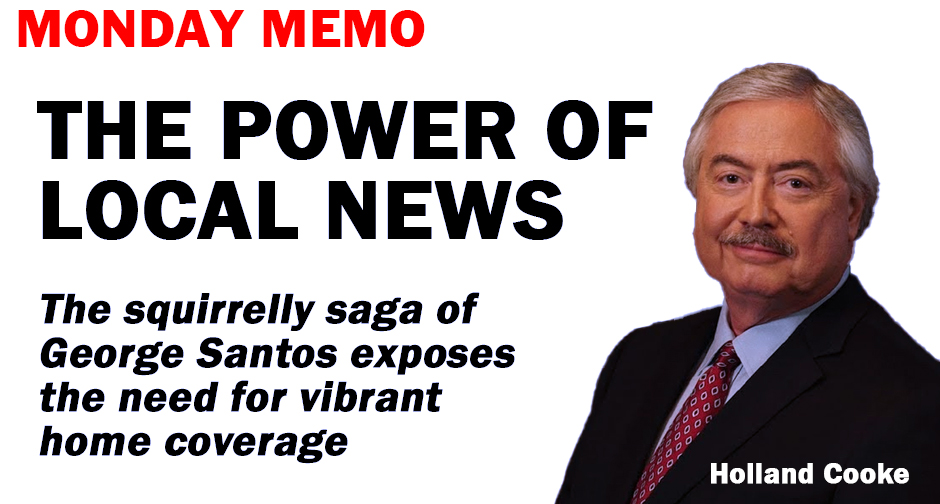
 Why? Done right, it makes you special. Because new-tech audio competitors don’t do local news, and with most broadcast radio hours now robotic.
Why? Done right, it makes you special. Because new-tech audio competitors don’t do local news, and with most broadcast radio hours now robotic.








